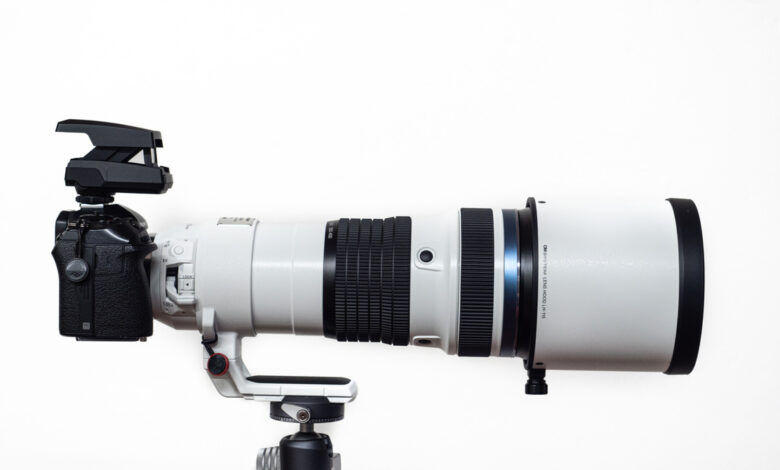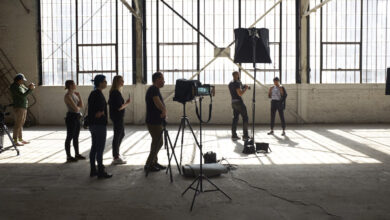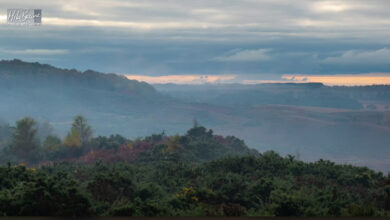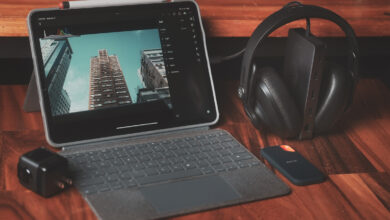Canon, Nikon, and Sony Users, Please Stop Buying the OM System EE-1 Dot Sight. We Review.

Much to the dismay of OM System camera owners, other camera brand users have been buying up all the OM System EE-1 Dot sights and the stocks have disappeared. Don’t tell anyone, but they are available again for now. Canon, Nikon, and Sony readers, please ignore this article about how useful they are.
Why Do We Need the Dot Sight EE-1

Besides landscapes and macro, one of the other main markets that the OM System is aimed at is wildlife photographers. The ever-increasing numbers of wildlife and bird photographers migrating to the system is partially due to the narrower field of view and the extra effective reach that telephoto lenses are afforded as a consequence.
 When I used to shoot with a DSLR and was photographing birds in flight with a telephoto lens, it was relatively easy to keep the bird into the frame. With both eyes open, I could easily track them using the optical viewfinder, keeping the camera pointing in the same direction as my eyes were looking. However, when I switched to mirrorless, things became more difficult. I found it much harder to find the bird with the camera. With practice, I’m getting better at it. But it is still more difficult than it was with the optical viewfinder, especially when using a very long lens like the 150-400mm f/4.5 PRO.
When I used to shoot with a DSLR and was photographing birds in flight with a telephoto lens, it was relatively easy to keep the bird into the frame. With both eyes open, I could easily track them using the optical viewfinder, keeping the camera pointing in the same direction as my eyes were looking. However, when I switched to mirrorless, things became more difficult. I found it much harder to find the bird with the camera. With practice, I’m getting better at it. But it is still more difficult than it was with the optical viewfinder, especially when using a very long lens like the 150-400mm f/4.5 PRO.
That is where the OM System EE-1 Dot Sight comes into play.

What Is the OM System EE-1 Dot Sight?
The OM System Dot Sight EE-1 is a battery-powered device that fits into the hotshoe on top of the camera. It’s small, measuring about 3 x 1.5 x 1.5 inches (7 x 4.25 x 4.25 cm), and weighs just 2.6 ounces (73 grams).

At the back is a switch that lifts the top upwards to reveal an optical viewfinder screen. When you switch on the EE-1, a red LED projects a dot onto the screen, and that is used to align the camera with the subject. There are two ways of using it. First, you can keep your eye close to the Dot Sight and forget the electronic viewfinder (EVF). Alternatively, you can use the dot sight to line up your subject and then move your eye to the EVF, as you would with a spotting scope on a telescope.

Once mounted on the camera and switched on, the site needs a little bit of setting up. I started by mounting mine on my OM-1 with the OM System M.Zuiko 150-400mm f/4.5 PRO lens attached. I mounted the camera on a tripod using the lens’ foot. Then, I aimed and focused it on a subject sitting approximately at the distance that I would be from a large flying bird like a gull. That’s usually about 12 yards (11 meters). I used the door handle of my house. Next, looking through the Dot Sight, I adjusted the position of the red dot so it too sat on the handle. The dot’s position is adjusted by two small wheels that move it up and down, left and right. There is also a brightness adjustment for the dot. Then, it’s all set to go.

Using the OM System EE-1 Dot Sight
Using this device, it is much easier to align subjects with the camera. That’s because looking through the window of the Dot Sight, you are seeing the world exactly as you would with your eyes. Furthermore, that window is not enclosed, so you can see around the edges, enabling you to spot subjects in the periphery and bring them into the frame. When I placed the dot on the subject, it was in the middle of the frame.

One thing I was curious about was the parallax error. Most of us are used to seeing the world through our cameras’ lenses. When you look through the Dot Sight, you are not doing that but viewing from above the lens. This is why the position of the red dot is adjustable. However, if you set it up to photograph something 12 yards away and then change to a subject double that distance, the angle formed by the lens and the Dot Sight to the subject becomes more acute, and the red dot is no longer exactly aligned.
In the following shot, I had set up the Dot Sight for the starling at 400mm. Shortly afterward, I took the second picture of the sparrow using with same settings but standing closer. You can see the bird is higher in the frame. At greater distances, the parallax error becomes less noticeable as the angle is more acute.
When this happened, I was still getting the subject in the frame, but I would need to rely more on cropping in development to get the composition I wanted. With the huge number of pixels and the quality of the lenses we have today, this is not an issue for most of us.

But was this realignment a problem? For me, not really. When I am photographing wildlife, I know what I am going to shoot, and how far away it is likely to be. With practice, I am learning how many clicks of the vertical adjustment wheel it takes to realign the dot for more distant subjects. I might, very carefully, add a white dot of paint to the vertical wheel as an index mark for when I first set it up.
You don’t necessarily need to use the sight for actually taking the photo. I also used it on a tripod in the same way as one would use a spotting scope. My big lens, with the internal teleconverter activated, has a similar field of view as a 1000mm lens on a 35mm sensor camera. I used the site to line up the camera with a distant subject and then transferred to using the viewfinder. Of course, the picture isn’t going to be as great as getting close to the subject. However, many people use these big lenses not for fabulous photos, but in the way they would use a spotting scope to see a bird and then record it. For this purpose, the Dot Sight is an excellent tool.
I found one drawback to the EE-1 Dot Sight when I looked through the viewfinder. If I am wearing my peaked Lowe Alpine Mountain Cap, the peak gets in the way. The simple solution is to reverse the hat or use one without a peak.
What I Liked and What Can Be Improved
What I Liked
- The EE-1 is small and light and can be slipped into a top pocket.
- It’s easy to set up.
- It’s affordable
- It is a useful tool for shooting with telephoto lenses, especially super-telephoto lenses.
- It works well with subject detection on the OM-1
- It’s dust- and splash-proof. That’s just as well as the first time I took this out, it rained.
- The hot shoe mount is universal for most camera brands.
- Photographing birds in flight is much easier with a long lens when using the dot sight.
- Distant subjects are easier to locate than just using a super-telephoto lens.

What Could Be Improved?
I was pushed to find anything that I didn’t like about the EE-1 Dot.
- Stocks of the device disappear from the shops quickly because Nikon and Canon users keep buying them.
Conclusion: Is It Worth Buying?
- This is definitely a useful piece of equipment for those who shoot with long lenses. It takes a little setting up each time you change the lens, but once you are used to that, it’s a quick process.
It’s affordable and very useful for anyone who shoots wildlife with a long lens. You can buy the OM System EE-1 Dot Sight by clicking here.






